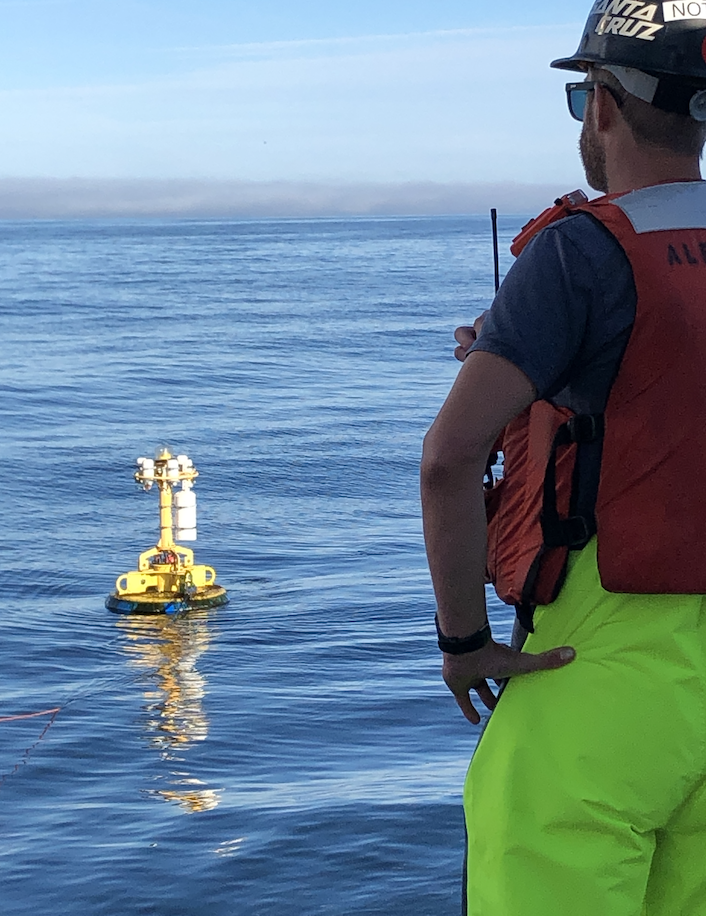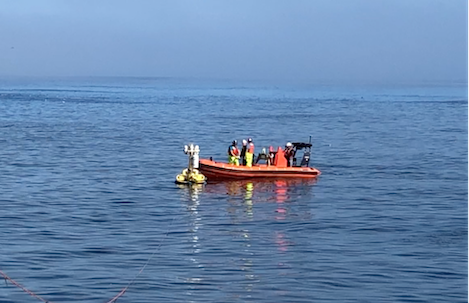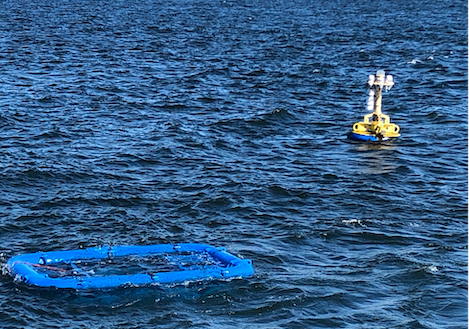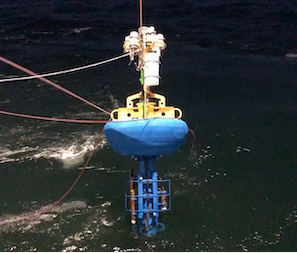Sometimes the ocean takes over and recoveries of ocean observing equipment don’t go quite as planned. That’s what happened today when the Endurance 17 Team tried to recover the Washington Inshore Surface Mooring. This mooring is specifically designed to examine coastal-scale phenomena and withstand the challenging conditions of shallow coastal environments, including large tidal fluctuations. It is located in an area where the Columbia River deposits large amounts of sediment, which impeded the recovery of the bottom part of the mooring.
This mooring contains four primary sections. The first is a Surface Buoy that is instrumented and floats on the sea surface. The second is a Near Surface Instrument Frame that carries many ocean observing instruments about 7 meters below the surface. The third is a Multi-Function Node (MFN), which carries instruments and power needed to transmit ocean observations from the seafloor back to shore. The fourth is an anchor that keeps the mooring in place.

Deck Lead Alex Wick contemplates how to recover the Washington Inshore Surface Mooring.
The Endurance 17 team hit two releases that were supposed to disengage the multi-function node from the anchor so the MFN could be brought onboard. Neither resulted in the MFN surfacing, either because they were impacted by sediment or the MFN was buried. The team decided to try a third option, a release called a “Sediment Escape Line or SEL” that had been installed as a failsafe, but had never been used before.
With a bit of trepidation, the team activated the SEL, which released a 16-inch round float, and it quickly popped to the surface. The SEL was still connected to the multi-function node, which made it possible to “reel it in,” so to speak so that it could be brought onboard. The SEL, however, had to be connected by hand to a line from the ship. A small boat was launched from the R/V Thomas G. Thompson with two members of the Endurance Team and three crew. Once in the vicinity of the SEL, a team member, Jeffrey Michael Wood, attached a line to the SEL to re-establish a link with the MFN that was still on the bottom.

A small boat and team were sent to the surface buoy to connect lines so it could be brought onboard.
Once the team was back onboard, efforts to pull in the MFN using a line attached to a heavy winch continued. After about an hour of gentle pulling, the MFN finally surfaced, much to the relief of all onboard. It came to the surface with a pool of mud, indicating that it had indeed been buried in the drifting sand at this location.

The blue multi-function node was finally brought to the surface, upside down and in a sea of mud.
The MFN was brought onboard, followed by the surface buoy and near instrument frame. The only remaining item left below was the anchor. While the anchor was being pulled in the line to which it was attached broke. The anchor’s location was marked and will be recovered during a future operation.
While the recovery of the Washington Inshore Surface Mooring took much longer than anticipated and was done in reverse order than typical recoveries, it was followed by a seamless deployment of its replacement mooring. So the team ended the day having accomplished all of its objectives, but one anchor, which will be recovered with the help of a remotely operated vehicle during a future expedition.

The team ended the day with a seamless deployment of the Washington Inshore Surface Mooring.
Recent Updates